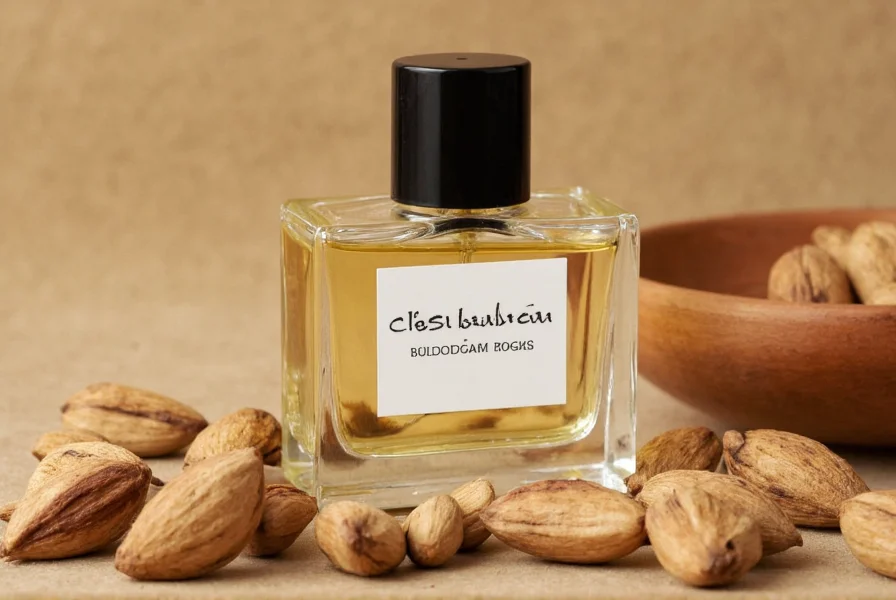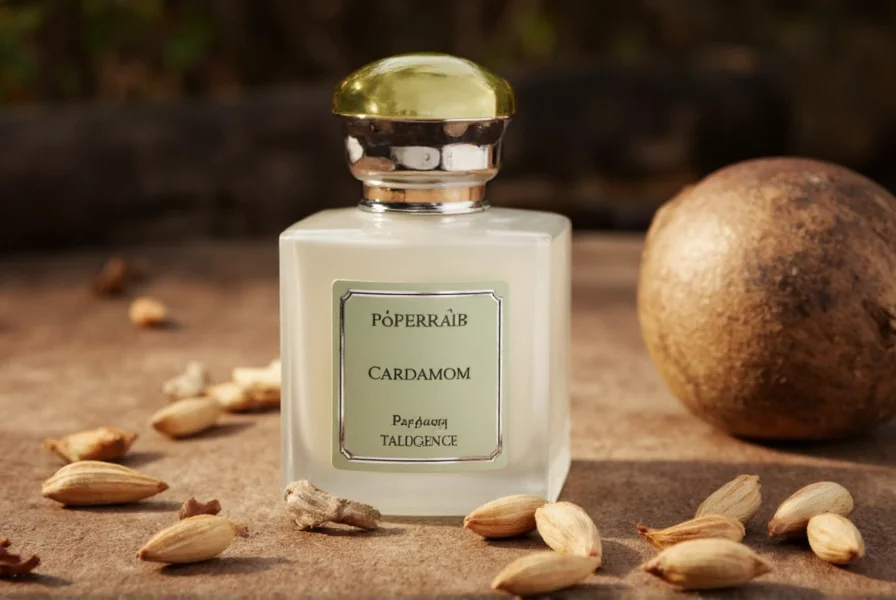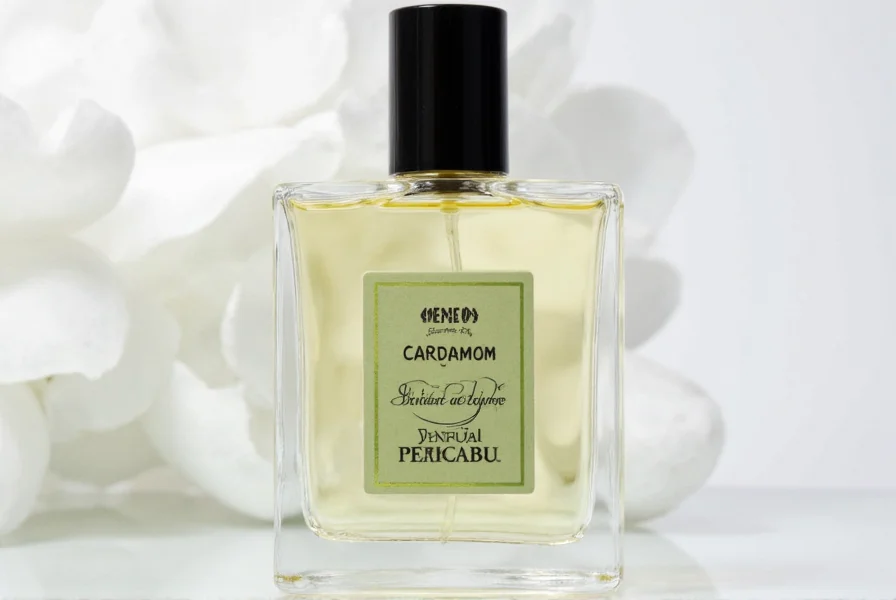Cardamom, scientifically known as Elettaria cardamomum, has been prized in perfumery for centuries, particularly in Middle Eastern and Indian fragrance traditions. The essential oil extracted from green cardamom seeds contains cineole, limonene, and terpinolene compounds that create its distinctive aromatic profile—simultaneously fresh, spicy, and slightly medicinal without being overpowering. Unlike many spice notes that dominate a fragrance, cardamom plays exceptionally well with others, making it a favorite among master perfumers seeking complexity without heaviness.
The Historical Journey of Cardamom in Fragrance
Originating in the Western Ghats of India, cardamom has been used in traditional attar (oil-based perfume) production since ancient times. Historical records show Egyptian pharaohs importing cardamom for both medicinal and aromatic purposes as early as 1200 BCE. In traditional Arabic perfumery, cardamom was often combined with rose, saffron, and oud to create complex buq' al-ward (rose water) formulations. The spice traveled along ancient trade routes to Europe, where it became a prized ingredient in Renaissance-era pomanders and later in classic French eau de cologne variations.
Understanding Cardamom's Fragrance Profile
What makes cardamom so special in perfumery is its remarkable complexity. Unlike single-note spices, cardamom offers multiple aromatic dimensions that evolve on the skin:
| Fragrance Dimension | Chemical Components | Perfume Role |
|---|---|---|
| Top Notes (0-15 mins) | Cineole, limonene | Fresh, citrusy opening with lemon-pepper brightness |
| Middle Notes (15-60 mins) | Terpinolene, linalool | Warm, herbal-spicy heart with subtle floral undertones |
| Base Notes (60+ mins) | Alpha-terpineol, myrcene | Subtle woody, almost camphoraceous dry-down |
This multi-faceted nature explains why cardamom works so well across fragrance families—from fresh citrus compositions to deep oriental blends. When properly balanced, it adds sophistication without overwhelming other notes, making it particularly valuable in modern niche perfumery where complexity is prized.

Cardamom Extraction Methods for Perfumery
Unlike many floral ingredients that use enfleurage or steam distillation, cardamom requires specialized extraction techniques to preserve its delicate balance of volatile compounds:
- Steam distillation - Most common method producing a pale yellow essential oil with strong top notes but some loss of complexity
- CO2 extraction - Preserves more of the full spectrum of aromatic compounds, resulting in a richer, more complete scent profile
- Absolute extraction - Used less frequently due to cardamom's delicate nature, but produces interesting variations for perfumers
The quality of cardamom oil varies significantly based on origin (Guatemalan cardamom tends to be sweeter while Indian varieties are more herbal) and processing methods. High-quality cardamom essential oil contains approximately 2-5% of the volatile compounds that create its distinctive scent, making it a relatively concentrated ingredient in perfume formulations.
Mastering Cardamom Perfume Combinations
Cardamom's versatility shines when paired with complementary notes. Professional perfumers have developed several classic combinations that showcase cardamom's unique character:
- Cardamom and citrus - Creates vibrant, refreshing fragrances where cardamom's spice enhances rather than competes with lemon, bergamot, or grapefruit
- Cardamom and woods - Particularly effective with sandalwood or cedar, where the spice adds warmth without heaviness
- Cardamom and leather - A sophisticated masculine combination where cardamom's herbal quality softens leather's intensity
- Cardamom and florals - Surprisingly effective with rose or jasmine, adding an unexpected spicy dimension to traditionally sweet compositions
- Cardamom in gourmand fragrances - Works beautifully with coffee, chocolate, or vanilla, providing a sophisticated counterpoint to sweetness
When learning how to wear cardamom fragrance, consider the season and occasion. Lighter cardamom-citrus compositions work well for daytime and warmer months, while cardamom-woody or cardamom-oriental blends excel in cooler weather and evening settings. The key to appreciating cardamom perfume scent profile is recognizing its evolution—what starts as bright and fresh transforms into something more complex and intriguing as it settles on the skin.

The Science Behind Cardamom's Longevity
One question many fragrance enthusiasts ask is about cardamom and sandalwood perfume longevity. Cardamom itself has moderate staying power—typically 3-5 hours as a top/middle note—but its interaction with base notes significantly extends its presence. When cardamom is properly formulated with fixatives like ambroxan, vetiver, or certain musks, the spicy character can remain perceptible for 6-8 hours. This makes understanding cardamom in oriental perfumes particularly valuable, as these compositions often feature the spice in the heart with robust base notes that anchor its presence.
Cardamom Perfume Across Genders
Historically associated with masculine fragrances due to its spice character, contemporary perfumery has embraced cardamom for all genders. In best cardamom perfumes for men, it often appears in leather or woody compositions, while in feminine fragrances it frequently partners with florals or gourmand notes. The most sophisticated modern interpretations transcend gender entirely, focusing instead on how the spice enhances the overall composition. This gender-fluid approach reflects broader trends in spice notes in modern perfumery, where traditional boundaries are increasingly irrelevant.
Appreciating Quality in Cardamom Fragrances
When evaluating long lasting cardamom scents, look beyond initial impact. High-quality cardamom perfumes demonstrate evolution and balance—never smelling like a single-note spice bomb. The best formulations allow cardamom to reveal its complexity gradually, with the citrusy top notes giving way to herbal warmth, then settling into a subtle woody foundation. Avoid compositions where cardamom becomes medicinal or overly sharp, as this indicates poor formulation or low-quality raw materials.
Conclusion: The Enduring Appeal of Cardamom
Cardamom's journey from ancient spice route commodity to modern perfumery staple demonstrates its timeless appeal. Its ability to bridge cultural fragrance traditions while adapting to contemporary tastes makes it one of perfumery's most versatile ingredients. Whether you're exploring cardamom perfume for the first time or seeking to deepen your appreciation of this remarkable spice, understanding its multifaceted nature will enhance your fragrance experience. As niche perfumery continues to explore spice notes in modern perfumery, cardamom remains a cornerstone ingredient that offers endless possibilities for creative expression.
What does cardamom perfume actually smell like?
Cardamom perfume offers a complex scent profile that begins with bright, citrusy top notes reminiscent of lemon and pepper, transitions to a warm, herbal-spicy heart with subtle floral undertones, and finishes with a delicate woody, almost camphoraceous dry-down. Unlike heavier spices like cinnamon, cardamom provides sophistication without overwhelming other notes, creating fragrances that are simultaneously fresh and warm.
Is cardamom considered a masculine or feminine fragrance note?
Cardamom transcends traditional gender boundaries in modern perfumery. While historically used more in masculine fragrances for its spice character, contemporary formulations feature cardamom across all gender categories. In masculine scents it often appears with leather and woods, while in feminine compositions it pairs beautifully with florals and gourmand notes. The most sophisticated modern interpretations focus on cardamom's inherent complexity rather than gender associations.
How long does cardamom fragrance typically last on skin?
Pure cardamom as a top/middle note typically lasts 3-5 hours, but its longevity significantly increases when properly formulated with base notes. In well-constructed fragrances where cardamom is paired with fixatives like sandalwood, vetiver, or certain musks, its spicy character can remain perceptible for 6-8 hours. The key to long lasting cardamom scents is not just concentration but thoughtful composition that allows the spice to evolve gradually on the skin.
What are the best notes to pair with cardamom in perfume?
Cardamom pairs exceptionally well with several fragrance families: citrus notes (bergamot, lemon) create vibrant fresh compositions; woods (sandalwood, cedar) provide warm, sophisticated bases; leather adds masculine depth; florals (rose, jasmine) gain unexpected complexity; and gourmand notes (coffee, vanilla) balance sweetness with spice. The most successful cardamom and sandalwood perfume combinations demonstrate how the spice enhances rather than competes with complementary notes.
Why has cardamom become popular in niche perfumery recently?
Cardamom's rise in niche perfumery stems from its remarkable versatility and complexity. Unlike single-dimensional spices, cardamom offers multiple aromatic facets that evolve on skin, appealing to fragrance enthusiasts seeking sophistication. Its ability to bridge cultural fragrance traditions while adapting to contemporary tastes makes it valuable for creating distinctive scents. As consumers move beyond mainstream vanilla and musk compositions, spice notes in modern perfumery like cardamom provide the complexity and uniqueness that define today's artisanal fragrance market.











 浙公网安备
33010002000092号
浙公网安备
33010002000092号 浙B2-20120091-4
浙B2-20120091-4